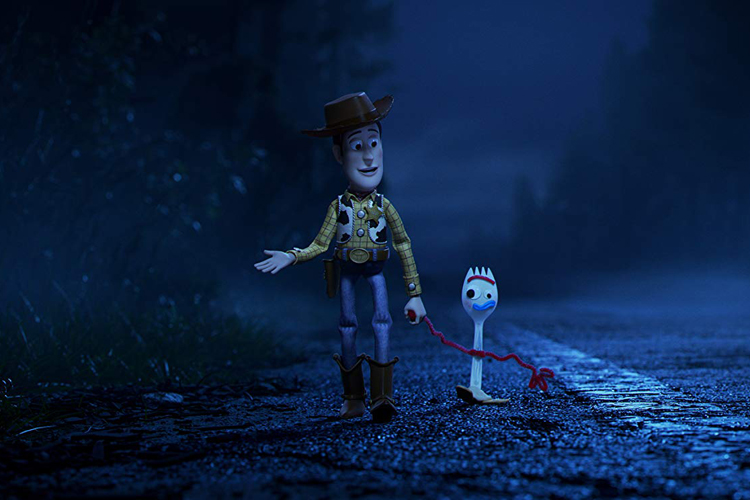The summer of 2019 has been rather Dr. Jekyll and Mr. Hyde with its franchise sequels. The industry’s good face has given us successes like Avengers: Endgame and John Wick: Chapter 3, but the Hollywood Hyde has brought out the worst in unnecessary sequels: the less said about Men in Black, X-Men, and Shaft, the better. So should we be worried about Pixar joining the summer sequel parade with Toy Story 4?
It’s hard to argue that another Toy Story was necessary, given the finality with which Toy Story 3 ended. Much has been said about how Pixar’s target audience grew up with Woody’s kid, Andy: if the original Toy Story was an important part of your formative years, there’s a good chance you were moving to college alongside Andy in the early 2010s. But while he served well as a proxy for the audience, Andy wasn’t the one teaching viewers about love and loss—Woody and the toys were. Toy Story 4 is the first movie where Woody exists apart from Andy, and that’s the goldmine where Pixar has struck an original story.
Woody, Buzz, and company now belong to a young girl named Bonnie, who is just about to start kindergarten. Woody—no longer the favorite or the de facto leader of the toys—is struggling to adjust to life without Andy, and his troubles only worsen when Bonnie creates a new friend: a spork with googly eyes, pipe cleaner arms, and popsicle stick legs. A spork named Forky, who is alive.
Toy Story 4 gets a lot of comedy mileage out of Forky’s abnormality, but in true Pixar fashion, the movie is more focused on thematic implications. Forky is brimming with existential angst and suicidal ideation, which manifests as an obsession with returning to the trash from whence he came. It’s a dark direction for a kids’ movie, but then again, Toy Story 4 is barely a kids’ movie. The series continues to grow up with its audience in a self-reflexive manner: the children who grew up with Toy Story are now adults, and those adults might be wondering why Toy Story 4 has a reason to exist—so Toy Story 4 turns around and asks, “why do you have a reason to exist?”
The Toy Story movies have dealt with the desire to be needed quadruple times now, but thankfully, the fourth entry uses Forky to put a new spin on that theme. The spork’s identity crisis speaks to an underlying possibility: maybe we want to be needed because it gives us something to do, someone to be. If we’re somebody’s someone, we have a purpose; being needed might be more about us than it is about them. Forky’s introduction is the obvious in-route to this idea, but Toy Story 4 mostly develops it through Woody.
The other toys don’t receive much attention: for the first time, Woody is a lone protagonist rather than the head of an ensemble. The Toy Story series has always been small-scale by nature, but this individual focus makes Toy Story 4 a micro-scale story, and the creative team wisely re-stitches the movie around that. It’s downbeat, melancholy, and lacks the easy conflict of an antagonist—it’s not the toys versus a bad guy; it’s just the toys versus their own feelings of purposelessness. Without big stakes and a villain, Toy Story 4 spends more time on its subtext: gone is the emotional manipulation of the entire cast sliding towards an incinerator; here is the genuine consideration of what it means to live.
This substance isn’t entirely new to the Toy Story franchise, but never before has the series so firmly declined to answer life’s biggest questions—which is summated quite beautifully in a must-see post-credits scene. Toy Story 4, in its suggestion that the most grownup conclusion is not getting a conclusion, finds the series more thoughtful and poignant than ever before.
★★★★½ (4.5/5)




